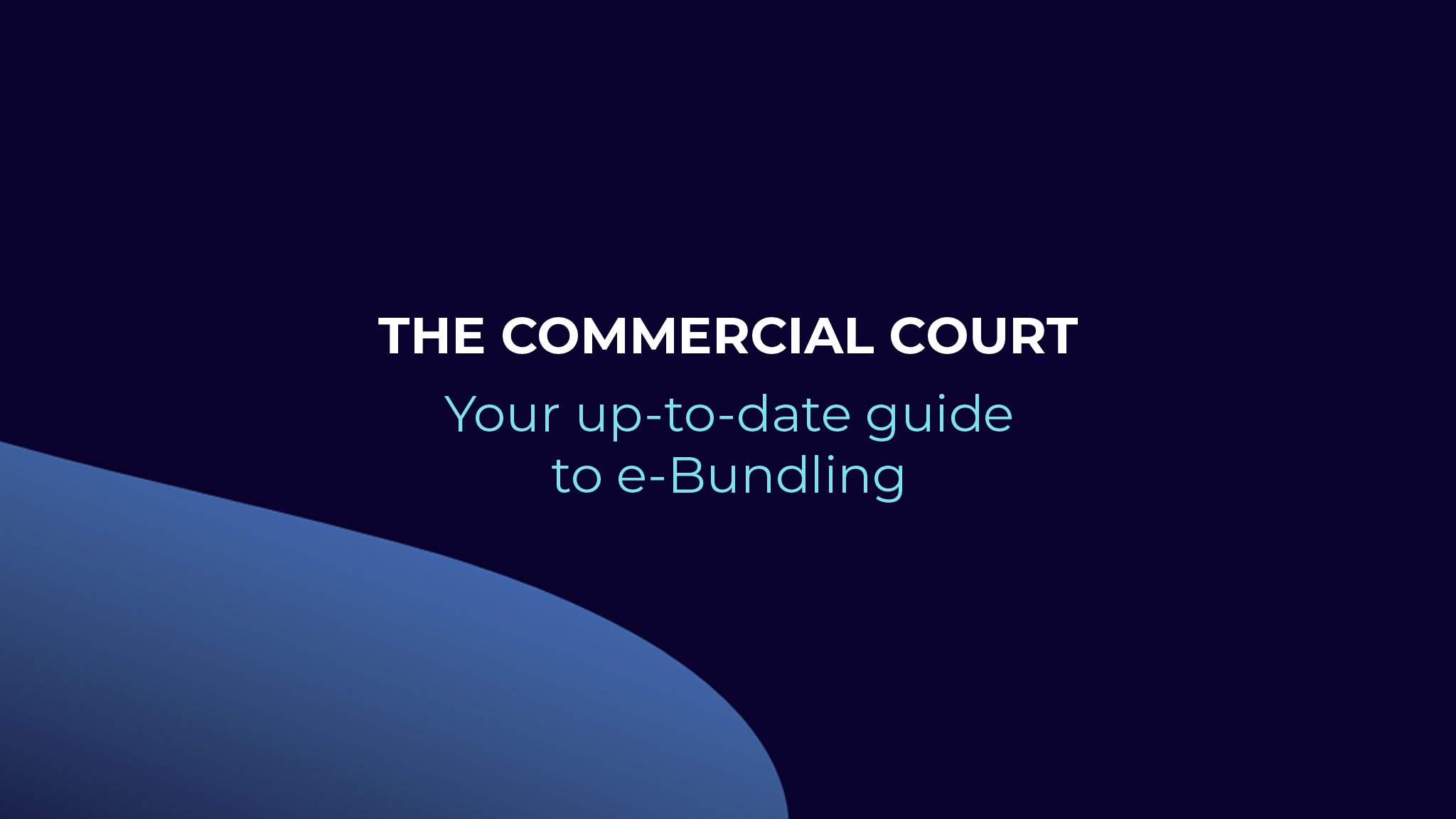Commercial Court Guidelines: eBundling in Brief.
Navigating new court guidelines can still be challenging. Our refresher on eBundling provides a useful overview on the core requirements.
Date : 03/08/23


eBundling provides several benefits and allows legal professionals to expedite the bundling process and work with enhanced speed and efficiency.
However, navigating new court guidelines can still be challenging, which is why we have created a refresher on eBundling which provides a useful overview on the core requirements to help you get ready for trial.
This information is for educational purposes only; for a full overview of the Commercial Court requirements, please click here.
What is a court bundle?
Firstly, what is a court bundle? Simply, a court bundle is no more or less than a collection of documents which are considered to be relevant to a case.
A core bundle should contain only the most important documents which are to be relied upon in the case.
Key points to consider when creating a court bundle
Courts now require only electronic bundles to be filed, unless hard-copy bundles are requested by the Judge specifically.
Co-operation between the parties is a duty required by all legal representatives when it comes to bundling.
Your up-to-date guide to eBundling
1. Bundle Formats
All hearing bundles (save for the core bundle) should be combined into one .pdf file. The file name for each .pdf should contain: the Claim No., a short version of the case name, and an indication of the number/letter of the bundle – e.g. “Bundle A (CL-2022-000111), Smith v Bloggs”.
All significant documents should be bookmarked, and should contain the page number of the document.
Individual bundles should be indexed, and the index should be searchable. A separate index or table of contents should be provided, and indexed documents should be hyperlinked. No more than one copy of each document should be provided, unless there is a justifiable reason.
2. Cross Referencing
Cross-referencing is central and prescriptive to the new guideline changes; it aids the Judge in quickly being able to understand the relationship between documents, particularly where specific exhibits or witness statements mention or rely on specific documents.
Hyperlinking is an easy and routine way to cross-reference across your bundle.
3. Core Bundle Requirements
Each page should bear its main bundle and page number reference and should be separately paginated. It must also be in PDF format.
Additionally, bundles must be lodged with the Court by 4pm on the working day before the first day or the trial or hearing.
4. General Guidance
Large electronic files can be slow to transmit and unwieldy to use and therefore should be avoided where possible. Therefore, bundles should only contain documents and authorities which are necessary for the hearing.
Additionally, each bundle needs to be named concisely, identifying its type.
5. Document Formats
Documents must be subject to OCR and should appear in portrait mode, save for bundles which contain only landscape-format documents, such as spreadsheets. Metadata should also be removed.
Download the full guide to commercial court bundling guidelines today to discover more about the how your court bundles should be presented.
Make complex court bundling easy with TrialView
TrialView offers one platform for great results, enabling fast and efficient bundle creation and allowing you to work with speed and efficiency for every aspect of your case.
Our award-winning solutions for e-bundling, case preparation, and evidence presentation is powered by AI technology and trusted by law firms, courts, and tribunals across the world.
If you’d like to find out more about the benefits of TrialView and how it can help ensure court compliance, get in touch today to learn more about our court bundling software.
Alternatively, book a tailored demo here.
Related Blogs


BBPC – The use of AI in commercial dispute resolution
TrialView were delighted to sponsor the BBPC Forum. The Master of the Rolls, Sir Geoffrey Vos, and an expert panel discussed how AI is being used in dispute resolution today and how this may look in the future.
- Written By : Eimear Mccann
- Date : 02/08/24


Timeline Creation: TrialView Perspective
With our AI functionality, we balance innovation with practical tools to help make your case preparation easier. One of our newest evolutions is Timeline Creation functionality.
- Written By : Eimear Mccann
- Date : 19/07/24
Take The Next Step.
If you’re wondering about how we can help you focus more on outcomes, and worry less about hearing prep, book a tailored demo or give us a call.


Get In Contact
Want to find out more? Get in touch to find out why TrialView is the platform of choice for dispute resolution.

